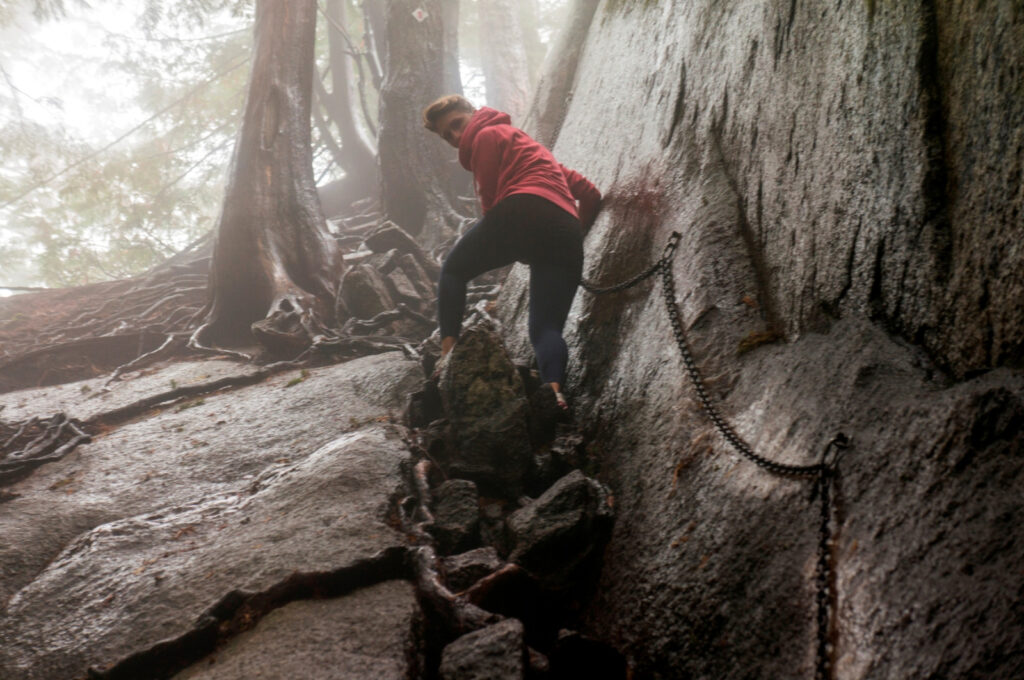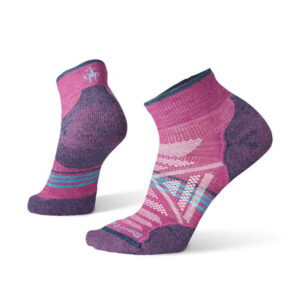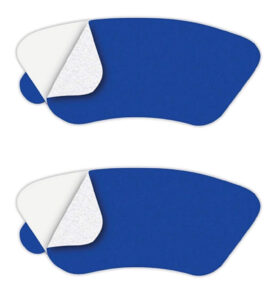Happy Feet: Get the Most Out of Your Hikes This Summer

By Coral Lewis, BSc, MPT, CAFCI
After what has been a rather long chilly winter, and a dubious spring, it seems summer is finally upon us! Sun and warm weather mean more hiking adventures, but can also mean sweaty and blister-prone feet. Running into blisters and pressure related foot pain can put a real damper on a hike and can contribute to aches and pains in other areas of the body including the ankles, knees, hips and back as we alter our gait pattern to avoid putting pressure on the painful areas of our feet. This article is intended to give you some basic pointers to help keep your feet happy and healthy on the trails this summer.
When it comes to hiking related foot pain, some of the most common issues are directly related to foot care and foot wear. For the well seasoned hikers out there, you are well aware that it’s much easier to prevent the development of foot pain while hiking than it is to treat it. I’ve made my fair share of mistakes regarding footwear and socks, and have suffered everything from blisters to ankle sprains because of it. A bit of advanced preparation and tweaking a few simple variables can go a long way in keeping your feet feeling good. Let’s discuss socks, shoes and blister care.
Socks
- Wearing appropriate socks while hiking is one of the most common oversights and has a huge impact on blister formation! The moisture retained in some materials causes the skin to soften and make it vulnerable to blistering.
- When it comes to socks, fit and thickness will vary based on personal preference. The one non-negotiable factor is choosing a high quality moisture wicking material such as merino wool or a synthetic equivalent. These materials will provide some cushioning while helping keep your feet cool and dry. Be prepared to spend ~$20/pair—it will be well worth the cost! My personal favorites are Smartwool and Darn Tough (see pictures below) but there are many other great options out there too.
- Cotton is a killer and should be avoided as it traps moisture and heat and will create an environment where blisters can easily form and bacteria can thrive.
- Some avid hikers swear by the “double sock” system. Layering a thin tight moisture wicking socks under a heavier weight wool based sock can help with friction reduction.
- Always pack an extra pair of socks on your hike: dry feet = happy feet!
Hiking Boots
- Choose a boot that is comfortable and fits well. This might seem obvious but you would be surprised by the number of times I’ve heard stories of people getting uncomfortable shoes because they loved the brand or style of the boot and thought that they would eventually get more comfortable after “breaking them in.” Do your research, but still try on a variety of different styles before choosing which to buy.
- Choose a shoe that allows for mobility while still providing good ankle stability.
- In a good fitting boot your heel should fit snug to the back of the boot but there should be wiggle room for your toes.
- There seems to be a general consensus that hiking boots should fit half to a full size larger than your typical shoe to allow for natural foot expansion while hiking and provide extra space to prevent the toes from hitting the front of the shoe during steep descents.
- Be sure to bring your hiking socks along when shoe shopping to make sure you are getting the appropriate sized boot.
- Ensure appropriate lugs on the sole for traction.
- Please, please, please break in your boots on shorter walks/hikes before taking on more serious mileage—an oversight that is more common than you would think!
- Insoles are often overlooked in hiking shoes but it is worth a bit of considerations as often the stock insoles that come in hiking boots aren’t up for the challenge of long hard miles and will wear down leading to hot spots where pressure and friction are greater. Replacing the existing insoles with something more durable is often beneficial. If you are currently wearing prescribed orthotics or you like a certain brand of off-the-shelf insoles, I would recommend purchasing hiking boots with dimensions that allow for the use of these insoles. When it comes to insoles and how to best support your individual feet, this requires individual evaluation. If you would like more information on this topic, or need an evaluation, you know where to find us!
Foot Hygiene & Blister Care
- When cutting your toenails keep them short and cut straight across to prevent ingrown toenails.
- Keeping feet clean and fresh for longer hikes will involve taking shoes and socks off midway through and letting feet and shoes dry off and cool down before reapplying a fresh pair of socks.
- For multi-day hikes make sure you thoroughly wash your feet each night. Some people like to use sanitary wipes to make sure any excess bacteria build-up is removed prior to the next days hike.
- Common spots to get blisters are between the toes, on the ball of the foot, any larger bony prominence such as bunions, and around the back of the heel.The tried tested and true Dr. Scholl’s Moleskin can come in very handy both for the prevention and treatment of blisters. Applying this preventatively to your hot spots and blister prone areas will go a long way in keeping you comfortable. I would recommend always bringing some with you on the trail – or other equivalent product. There are other friction reducing products that are worth looking into if you know you are prone to blisters. ENGO Blister Prevention Patches (made of teflon) are popular with some folks as they are applied to the inside of your shoes, not your feet, and have a very low coefficient of friction (see image below). Other popular brands include Band-Aid Blister Gel Guard, athletic tape, Leukotape, KT Blister Treatment Patch, and many more.
- Lubricating products can be very helpful as well as a preventative measure when applied to blister prone areas. I would recommend using a petroleum free product such as Body Glide or Gold Bond Friction Defense.
- To pop or not to pop? This is a highly debated questions when it comes to blister care. If you are going to pop it, do it with sanitized needle and make sure that you protect it and keep it clean after. I prefer not to pop it if I can, and instead use an anti-friction cream and/or keep it covered (as discussed above).
- For multi-day hikes it is very helpful to bring along a sturdy but lightweight shoe to wear as your “camp shoe”, such as Teeva or Chacos. It’s tempting to just bring flip-flops for this purpose but having something a bit more robust will give you alternative options if you are at a more rugged camp or you need back-up shoes on the trail.
Happy trails!
References:
https://thetrek.co/gear-review-engo-blister-prevention-patch/
https://thetrek.co/pacific-crest-trail/foot-care-on-the-trail/
https://gearjunkie.com/hiking-foot-care-on-the-trail-tips
https://www.alpenwild.com/Alpshiking/top-tips-foot-care-for-hikers/
Sevilla, J. A., F. M. Rodríguez, and R. M. Dallasta. “The treatment of blisters caused by friction while hiking the Road to Santiago.” Revista de enfermeria (Barcelona, Spain) 30.1 (2007): 32-36.








